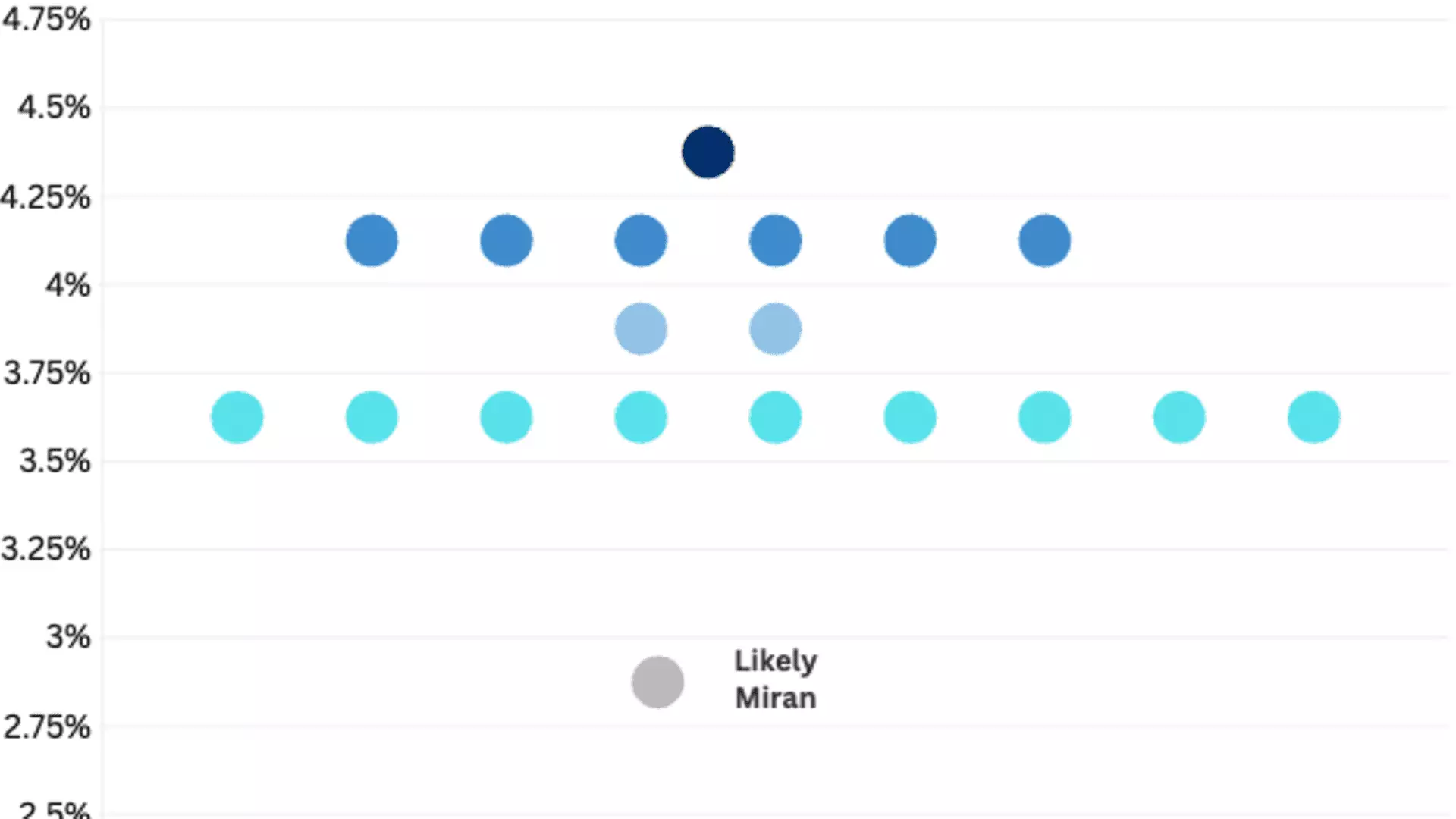In a surprising turn of events, the Federal Reserve’s recent decision to modestly reduce interest rates by 0.25% was met with a lone voice of defiance from newly confirmed Governor Stephen Miran. His call for a more aggressive 0.5% cut underscores a growing rift within the central bank’s ranks, revealing underlying fractures in how monetary policy is approached during a period of economic turbulence. This dissent is more than a mere statistical anomaly; it signifies a deeper philosophical debate about the Fed’s role in managing the economy amidst evolving challenges and political pressures.
Miran’s stance indicates a willingness to embrace more proactive measures, reflecting concern that current rate adjustments are insufficient to combat persistent inflationary pressures or economic slowdowns. While his colleagues, along with Chairman Jerome Powell, seem inclined towards a cautious, incremental approach, Miran pushes for a drastic shift, breaking the mold of consensus and hinting at internal divisions that could reshape future policy decisions. The fact that critics interpret his position as aligning with a more dovish ideology suggests a broader ideological struggle within the Fed—one that questions whether the traditionally independent institution is now susceptible to external influences.
The Political Overreach and the Erosion of Federal Reserve Independence
Miran’s appointment and outspoken dissent cannot be viewed in isolation; they are intertwined with the controversial political environment surrounding the Fed. His selection by President Trump amid allegations that the administration seeks to influence monetary policy raises fundamental concerns about the central bank’s autonomy. Critics argue that Miran’s presence on the board symbolizes a subtle yet alarming shift where political agendas threaten to compromise the Fed’s decision-making process.
The broader context, including Trump’s vocal desire for significantly lower interest rates—by as much as three percentage points—demonstrates an unsettling trend of presidential interference in monetary affairs. It undermines the delicate balance established over decades, where the Fed maintains a degree of independence to prevent short-term political gains from dictating economic policy. Critics on the center-left, like myself, view this as a dangerous development that could lead to inflation, fiscal irresponsibility, and a loss of credibility for the institution tasked with safeguarding economic stability.
The recent legal battles concerning the firing of Federal Reserve officials further amplify concerns. The attempted removal of Lisa Cook and other moves suggest that political actors are testing the limits of the Fed’s independence, risking politicization that could erode public trust. Such actions diminish the institution’s integrity and threaten to turn monetary policy into a battleground for partisan disputes rather than an impartial tool for economic management.
The Future of Rate Cuts: A Political and Economic Crossroads
The divergence within the Fed’s policy forecasts signals a significant crossroads. While most governors anticipate only a couple more rate cuts in 2025, Miran envisions a future where measures are more aggressive—potentially as many as four cuts into 2026. This discrepancy reflects contrasting visions: one rooted in cautious stabilization, the other in aggressive stimulus that risks fueling inflation.
Adding a layer of complexity, President Trump’s overt lobbying for drastic rate reductions paints a picture of a politicized monetary environment. His expectation of lower rates by two to three percentage points—far beyond what traditional economic prudence would dictate—casts doubt on whether the Fed can operate independently or if it is being pushed toward policies that may ultimately jeopardize long-term economic health.
The internal discord within the FOMC suggests that the path forward is anything but clear. An increased partisan influence raises questions about the central bank’s capacity to serve as a reliable steward of stable economic growth. If the Fed veers toward excessively accommodative policies under political pressure, it risks triggering inflationary spirals, asset bubbles, or other unintended economic consequences. Conversely, remaining too cautious might stifle growth or fail to address unfolding financial uncertainties.
A Dangerous Game of Political Manipulation
The broader implications of this internal turmoil extend beyond mere policy disagreements. They point to a creeping erosion of the institutional independence that has historically protected the Fed from political whims. By allowing external actors—be it presidents or partisan appointees—to influence key decisions, the integrity of monetary policy is compromised. This danger is particularly acute in a polarized climate where economic decisions become arenas for political sport rather than strategic governance.
The appointment of figures like Miran, and the ongoing legal battles over leadership positions, threaten to distort the mission of the Federal Reserve. They risk reducing it to a tool for short-term political gain rather than a guardian of economic stability. Such developments threaten to undermine the center-left belief that a truly independent, credible central bank is essential for effective economic policymaking in a democratic society.
In this volatile environment, the challenge lies in maintaining a delicate equilibrium—balancing necessary policy adjustments against the risk of politicization. If the Fed’s core independence is compromised, the consequences could be dire: inflation unchecked, economic volatility heightened, and the public’s trust in this vital institution severely damaged.

